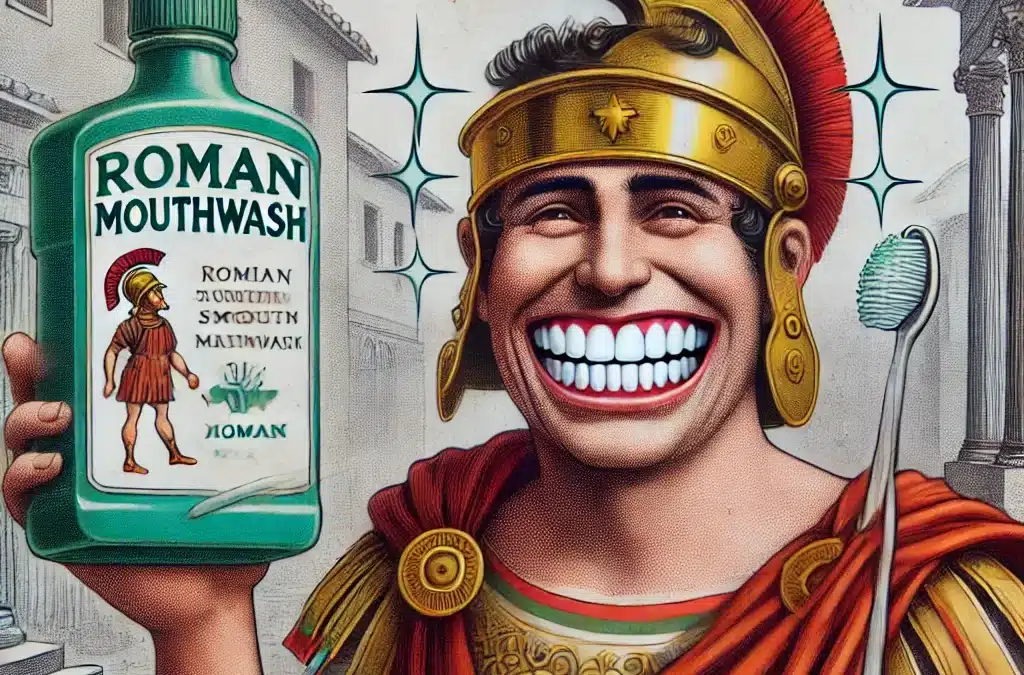Believe it or not, mouthwash hasn’t always been the minty fresh concoction we know today. In ancient times, people turned to a rather surprising substance to keep their mouths clean and their smiles sparkling—or so they thought. Welcome to the bizarre world of urine mouthwash!
The Urine Rinse Tradition: In ancient Rome, urine was not just a waste product; it was a highly valued liquid used for a variety of purposes, including tanning leather, laundering garments, and yes, even as a mouthwash. The Romans believed that urine, particularly Portuguese urine, which was deemed the strongest, could whiten their teeth and help with gum disease. The key ingredient? Ammonia—a natural compound found in urine that was thought to cleanse and whiten teeth.
Scientific Backdrop: Urine contains ammonia, which is a natural whitening agent and also has antiseptic properties. The Romans, known for their innovation and resourcefulness, utilized this readily available resource to its fullest potential, although not without the obvious downsides of smell and taste. It’s important to note that while ammonia can kill germs, using urine as a dental rinse is far from a pleasant or recommended practice by modern standards.
Cultural Context: This practice was so ingrained in Roman hygiene that even well-known Roman authors like Catullus made references to urine’s tooth-whitening capabilities. However, as dentistry advanced, the use of urine as a mouthwash thankfully faded into obscurity, replaced by more palatable—and less questionable—options.
While it may be hard to imagine reaching for a bottle of urine instead of your favorite mouthwash, this historical tidbit is a testament to the lengths our ancestors went to maintain dental hygiene. Today, thankfully, we have a wide array of scientifically approved dental care products that allow us to care for our teeth without resorting to such extreme measures.




